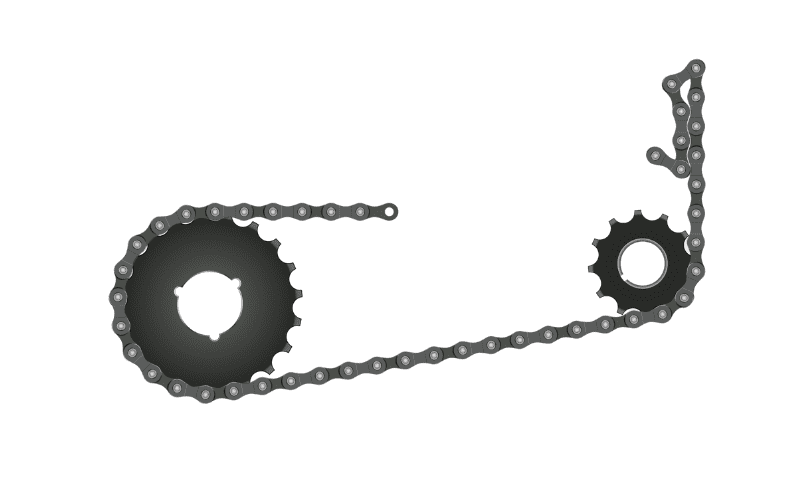You’ve just replaced your old bike chain with a new model. You go to take it for a test ride then, boom!
Your bike chain has broken in half!
It looked sturdy enough, so what happened? Did you just buy a cheap chain or is it your fault?
Why do new bike chains break? Keep reading to find out!
Contents
1. You Used the Wrong Type of Chain

Though at a glance all bike chains look the same, they’re not universal.
If your bike can shift between two gears, you may need to use a derailleur chain. Whereas bikes that do not shift gears usually use a one-speed chain.
Your bike’s chain needs to be compatible with the rest of your bike’s components to ensure the wheels, gears, and so on, all work seamlessly.
Even if you have the right type of chain, the size of the chain links and rivets could be incorrect.
This could cause your chain to become twisted or stuck around the cogs, breaking once any stress is put on it.
The best solution to this is to take your bike to a bike shop and ask them what kind of bike chain you need.
2. The Chain was Incorrectly Assembled at the Factory
Assembling a chain is a delicate process, as each rivet needs to be carefully placed, either by a machine or a person.
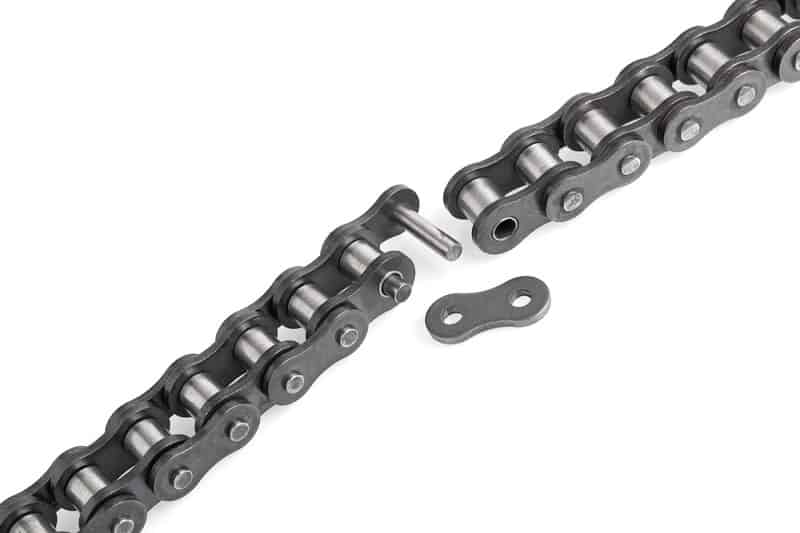
Machine-made chains could be faulty, since shifting even a millimeter out of place will cause the chain to be improperly assembled and break under stress.
Some factories have people make the chains, which is an extremely meticulous job. Someone making the smallest mistake while assembling the chain may cause it to break later on, even if it looks fine to the naked eye.
If done incorrectly, cutting the rivet to fit inside the plates could damage multiple parts of the chain.
These are minuscule mistakes, but it only takes one weak link to break a chain.
3. You’ve Incorrectly Installed the Chain on Your Bike

Your chain broke while riding your bike. Luckily, you had the tools to fix it.
However, after only another hour of riding, your chain broke again.
You may be incorrectly installing your chain, causing it to quickly break each time you ride your bike.
Your chain plates’ sockets also widen each time you place a new rivet in them. So, using the same rivet twice could result in it slipping out, as it no longer fits the plate’s socket.
This means your chain will be improperly fastened and could fall off your bike, breaking.
Instead, carefully read your chain’s instructional manual. Many chain companies also have YouTube channels showing you how to install their products.
To learn the basics of bike chain connectors and rivets, and how to use them, watch the video below.
4. The Chain is Too Tight
Your bike’s movement puts pressure on the chain, so the chain needs to be long and loose enough to freely move around the cogs.
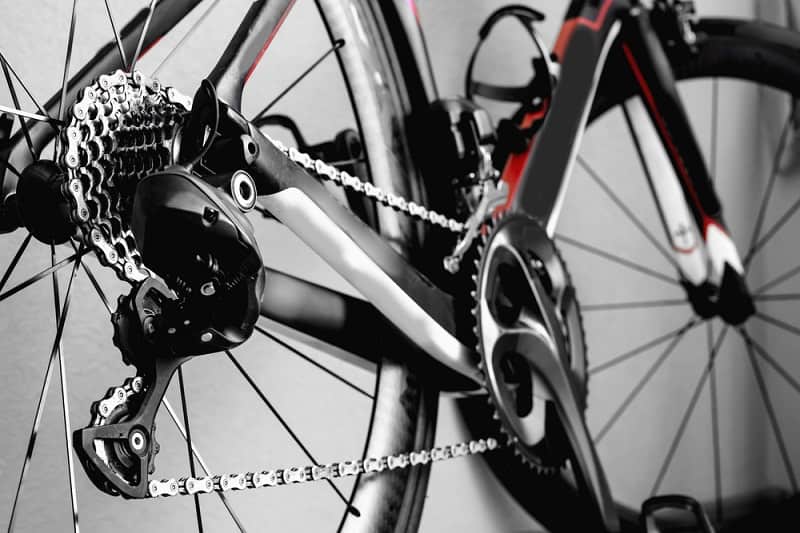
Using a tight chain will not only make it harder to cycle but could also cause the chain to break as it will be pulled across the cogs and snap when you pedal.
So, although your bike chain must be tight enough to stay on the cogs, it could break if it’s too tight and can’t sustain the tension caused by your cycling.
5. The Chain is Too Loose
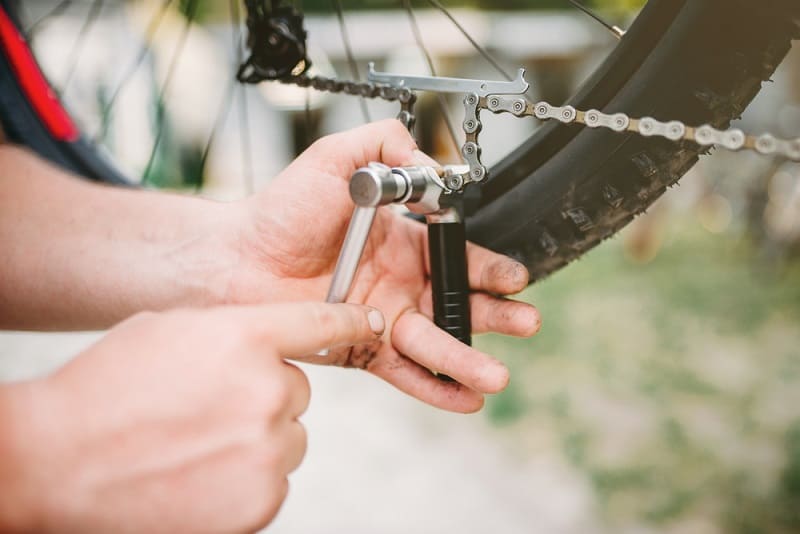
So, your bike chain isn’t too tight, but is it too loose?
Loose chains could slip off your bike’s cogs and break from wrapping around the machinery and being tugged on while you ride your bike.
In the best-case scenario, this will force you to stop your bike and fix the chain. In the worst-case scenario, you could end up in a nasty accident.
Look at your bike chain. Does it look like it’s just draped over the cogs and sprockets?
If so, then you may need to shorten the chain length, tightening it.
However, finding the right chain length can be challenging, especially since there’s not an exact standard measurement since every bike is a different size.
Watch the video below to learn how to find the right chain length for your bike.
6. You Incorrectly Shifted Your Bike’s Gears
Shifting your bike’s gears may seem like rocket science, but it’s simpler than it sounds.
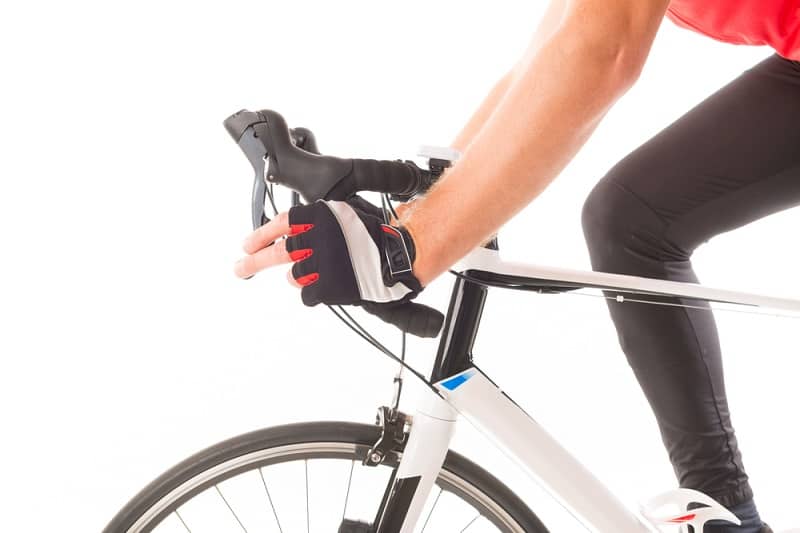
However, if done incorrectly it could put too much pressure on your chain, causing it to snap.
There are two things you want to avoid when shifting gears.
The first is shifting gears while your bike is exerting more force than usual. For instance, when you’re going up a big hill.
In this case, you must shift before you start your ascent, giving your gears time to change.
Secondly, you should avoid cross-chaining, which is using the biggest cog and chainring at the same time. Similarly, you must also avoid using the smallest cog and chainring in unison.
This puts a lot of pressure on your bike’s chain, which could cause it to break.
To learn more about gear shifting and how to do it properly, watch the video below.
7. You Reused the Chain’s Master Link
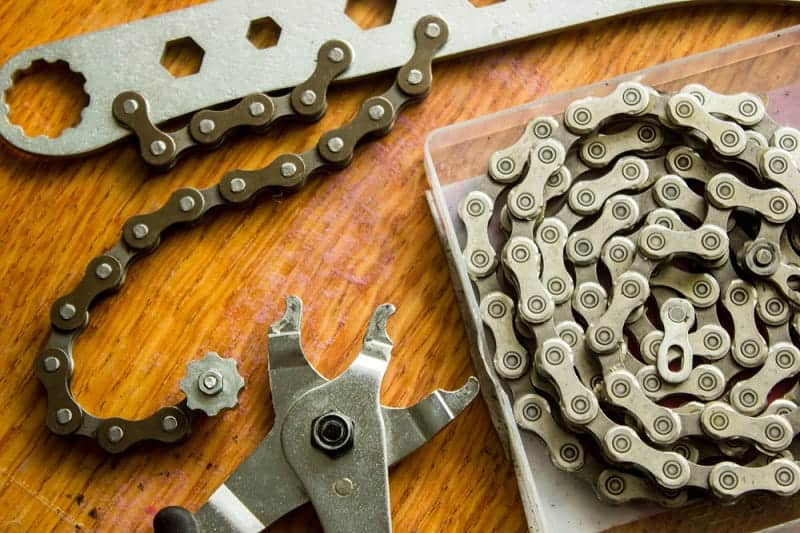
We get it. The cost of frequently buying new master links can add up.
However, reusing your old master link could be causing your bike chain to break.
Every time you remove the master link from your chain’s plates and take apart the chain, the link becomes significantly weaker.
This is because the tool used to take apart the chain scrapes off part of the link.
This, in turn, increases the likelihood of the link snapping while you’re riding your bike.
So, consider investing some extra money in new links. You’ll be thankful you did when you can ride your bike without worrying that the chain may break at any moment.
Watch the video below demonstrating why it’s important to change your master link every time you replace your bike chain.
